By Travis Maiuro · January 28, 2020
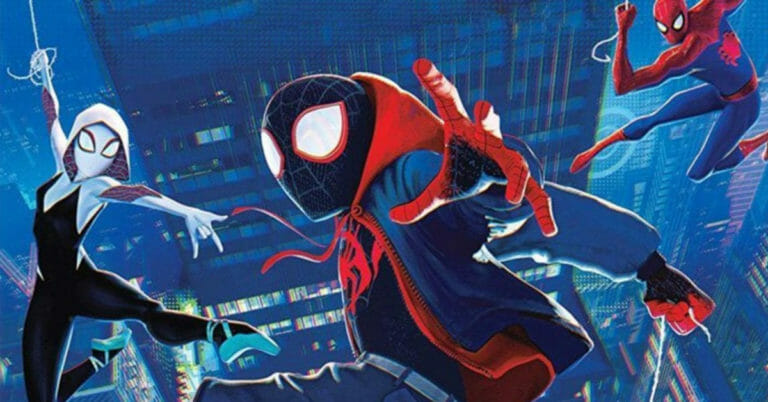
So you want to learn how to format animation scripts? You’ve come to the right place. I’m not even going to waste your time with a drawn-out introduction about this amazing animated movie and that amazing animated movie. I’m going to get down to the nuts and bolts straightaway. The secret to formatting animation scripts? There is no secret. It’s just like any other script. Surprise!
Or maybe not a surprise. Maybe you already knew this and you’re like, um… duh. But come on, if you clicked this link to read this article, admit it: you were wondering. Even if it was just a tiny bit — you were curious if animation scripts looked different than live-action ones. I mean, it wouldn’t be the craziest thought. After all, the two mediums do look different on screen, right?
But on paper, it’s just black ink for the both of them, baby. Or whatever color ink you’re using. (Let’s just stick to black, for your own good.) Sure, there may be some difference in vernacular or the freedom in writing style, but that’s storytelling, not formatting. Just ask one of Pixar’s Oscar-nominated screenplays if it thinks of itself differently than a live-action script. Guarantee if those scripts could talk, they’d be like, “Nah, man, we’re all just movies.”
Or maybe not.
But seriously — a movie is a movie, whether animated or not. And a movie just needs the same basic blueprint, the same foundation that is the screenplay.
But don’t just take my word for it. Let’s look at some examples.
1. Spider-Man: Into the Spider-Verse, written by Phil Lord and Rodney Rotham, was beloved by critics and fans alike for its revolutionary and gorgeous animation style (not to mention its well-crafted story). Some even said this was the way Spider-Man was meant to be on-screen: animated.
Download the screenplay for SPIDER-MAN: INTO THE SPIDER-VERSE here for free.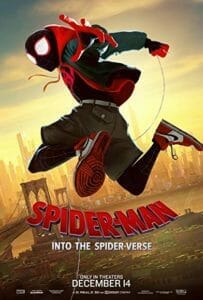
2. 2002’s Spider-Man, written by David Koepp, got the ball rolling for big-screen Spidey. Yes, there have been quite a few iterations since, in a relatively short amount of time, but this script was solid and entertaining and, arguably, set the bar for all superhero origin stories of the 2000s.
You’d be hard-pressed to find two Spider-Man films more different than those two. These are Spider-Men of different generations. But if you look at the respective scripts, they’re not so different after all.
Check it out — from an opening page of Into the Spider-Verse: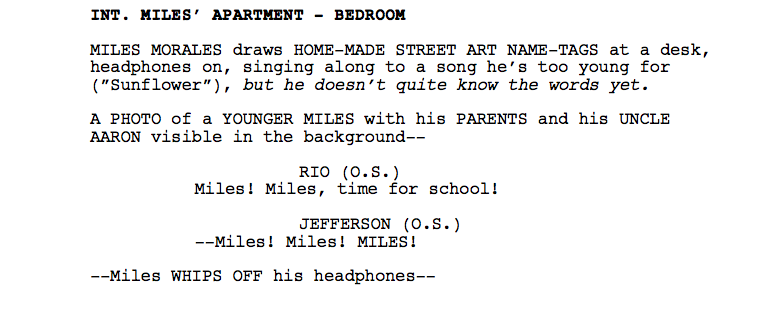
And from an opening page of Spider-Man: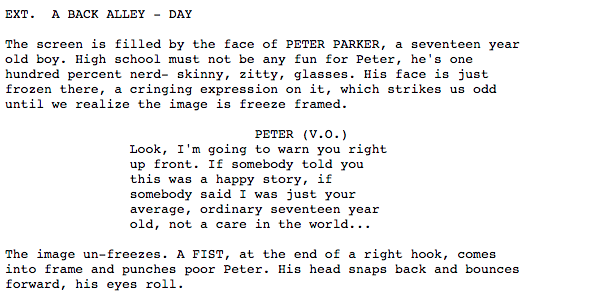
Just your ordinary slugline begins both scenes. The Hollywood standard. Yes, Spider-Verse’s script has bolded its sluglines, but that’s not an animation-only thing; that’s just personal choice.
And you’ll also see both have the same dialogue formatting, also the standard. Told ya: no difference.
Again, it’s mostly a style thing where you’ll see the differences between an animated script and a live-action one, and really, even that depends on the writer. Not to assume anything of Phil Lord, but being one of the guys behind The Lego Movie, you can expect his pace to be fast. Sure enough, the Spider-Verse script is much faster than Koepp’s 2002 Spidey script.
For instance, take a look at both of the scripts’ handling of the “spider bite.”
From Spider-Verse:
Not only do we “JUMP INTO PSYCHEDELIC 2D ANIMATION” that the 2002 film wouldn’t do, the writing style is much more direct than the earlier script.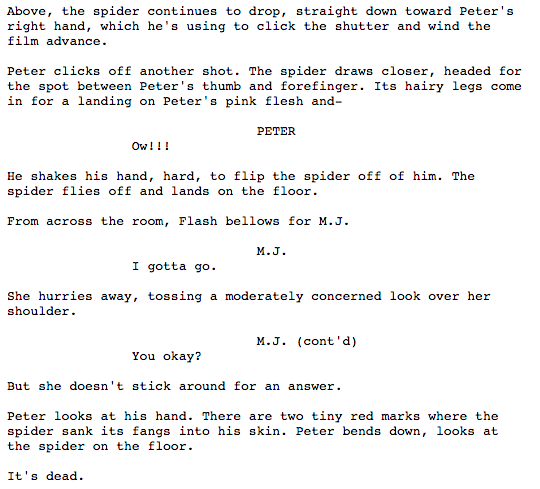
Much more description in this version, as you can see. Slower. More suspenseful. But, of course, that’s the point. Suspense is key here and suspense takes its time. Spider-Verse on the other hand handles the bite in a much different, more shock-value way, you could say. Writing suspense, however, is a topic for another day — one that could be broken down into hundreds of articles.
Point is, formatting-wise, you’re not going to differ much at all from animated and live-action. The safe bet is to treat them as one and the same, really. What you do want to focus on, if you are interested in writing a script for animation, is taking advantage of your medium. Animation isn’t a genre — look at it as a different type of paint for your canvas (hopefully that doesn’t sound too pretentious). Ask yourself what this medium provides in telling your story that live-action doesn’t. Why should this story be animated? Use that. Infuse it into your writing.
Don’t over-concern yourself with the formatting. That’s boring. Focus on the style. That’s fun.